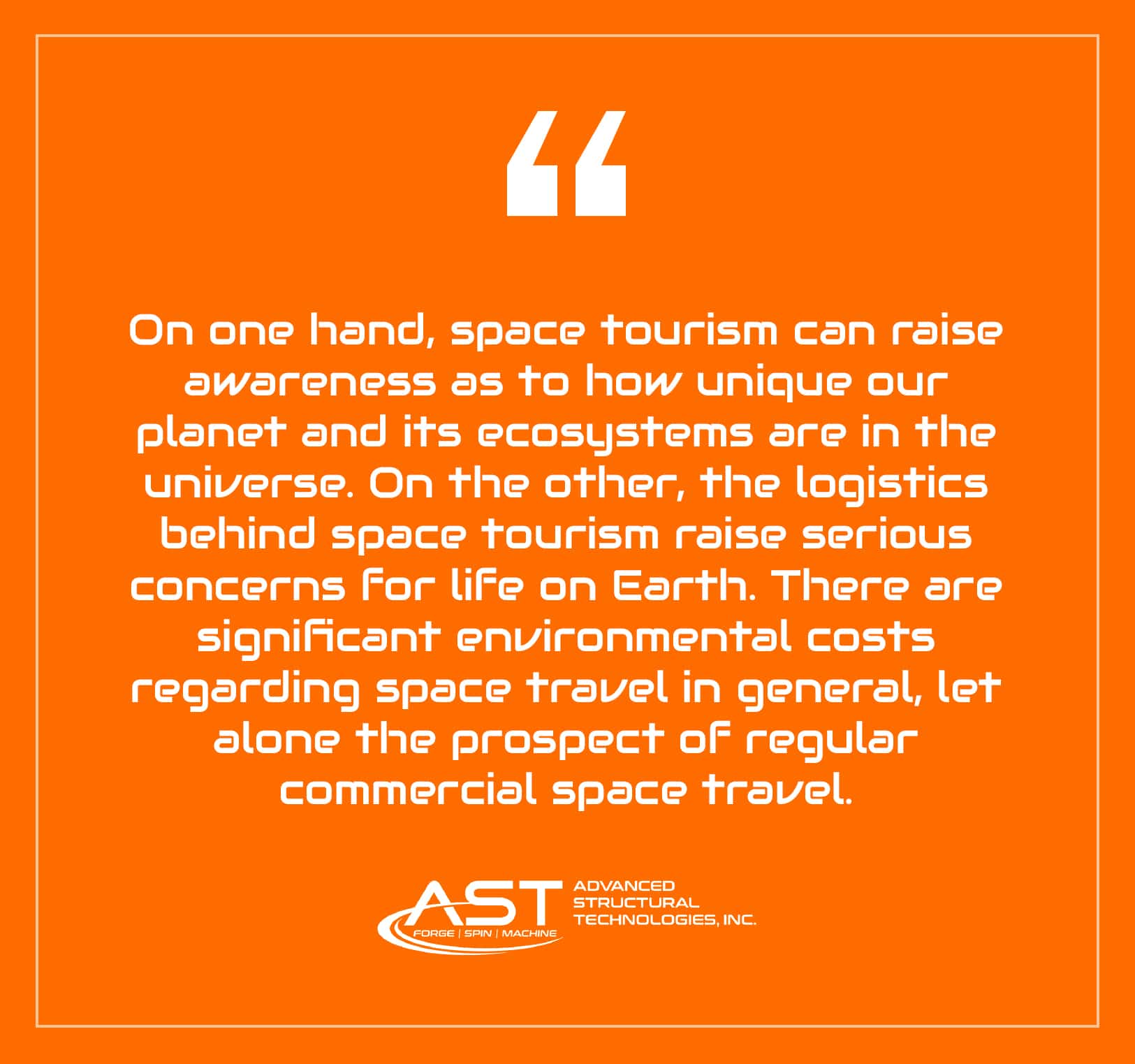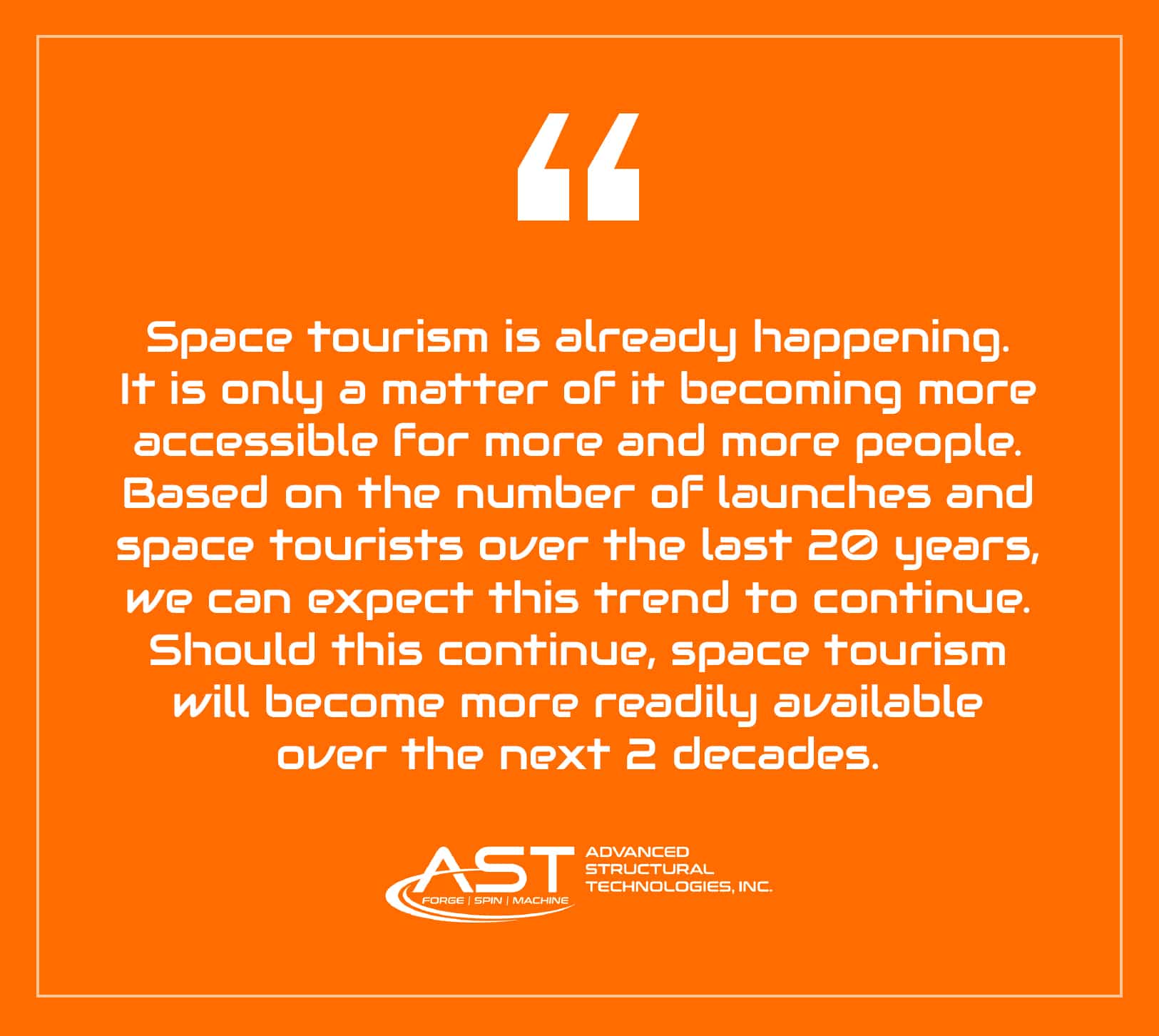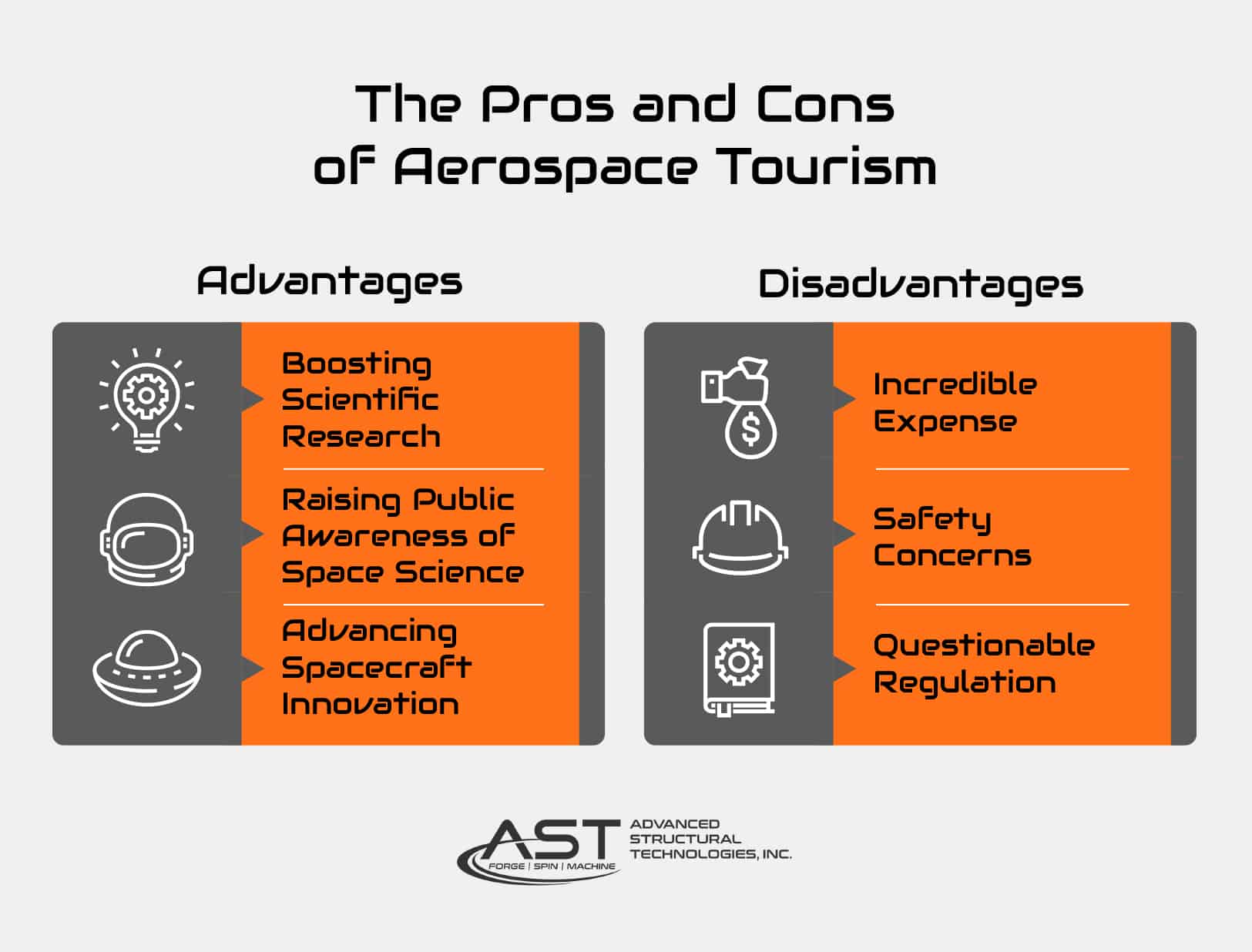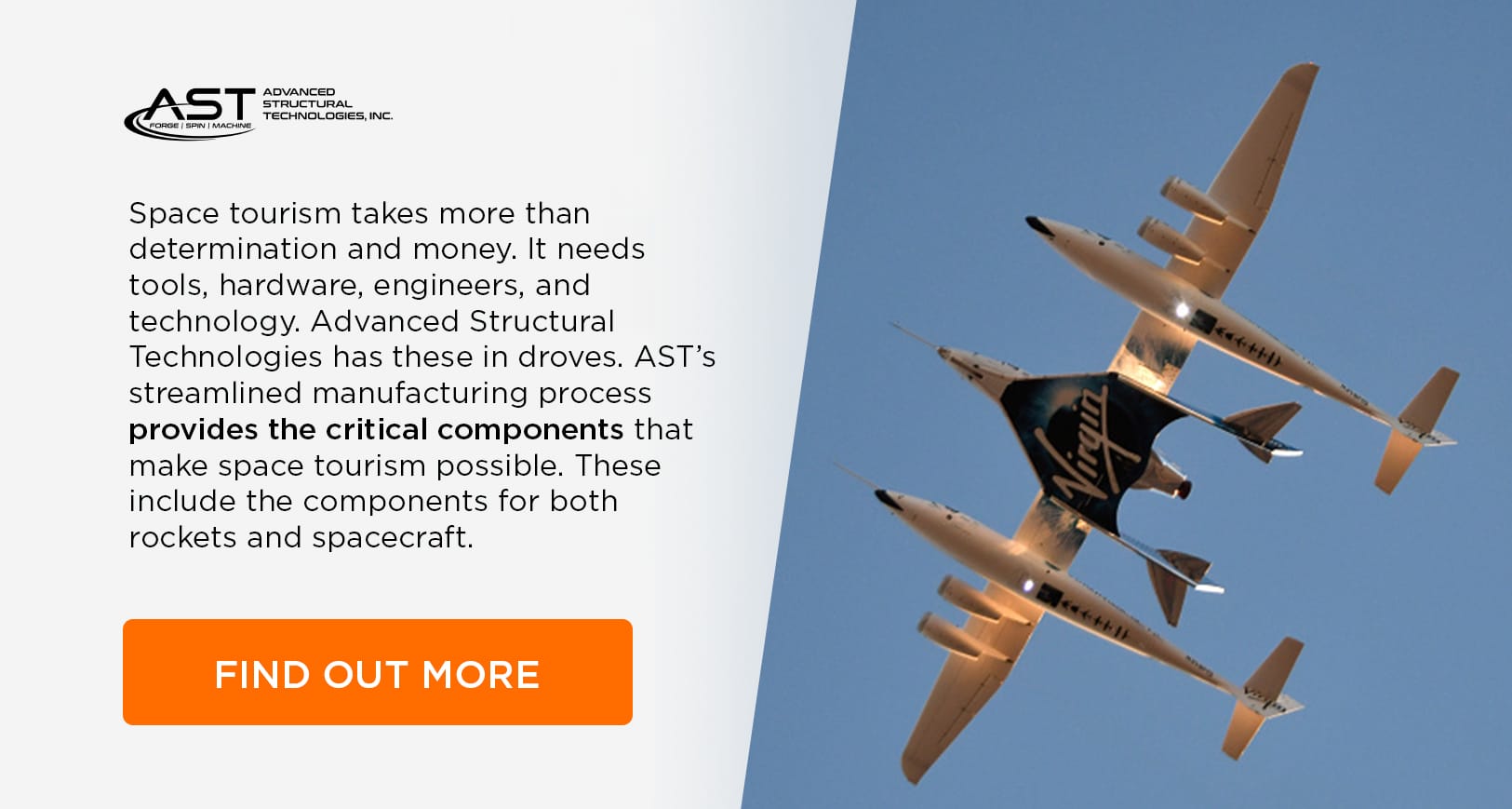Everything You Need to Know About Space Tourism

As children, many of us would look up at the sky at night and wonder. Our imaginations would run wild with the idea of being an astronaut and walking on the moon or visiting other planets. So, it is no surprise that space tourism has gained traction in our collective minds as well.
However, the space tourism industry is easier to dream about than made a reality. Numerous companies are now working to do just that, but there is a way to go yet before it is widely accessible. As of today, space tourism is still limited to the super-wealthy.
Yet, this is likely to change in the coming years should we continue on the path we’re on. Aerospace technology is rapidly advancing under the supervision of independent enterprises and tech companies determined to make it happen.
That’s why today we’re going to look at the space tourism industry, the challenges these companies face, and what we can expect in the future.
What is Space Tourism?
In essence, space tourism is simply recreational space travel. In its current state, space tourism comes in two forms: suborbital and orbital. Although, there are plans for a lunar tourism mission in the works for within the next decade, the second to ever occur. However, widespread commercial lunar flights will be a long time coming.
Suborbital space tourism is the more accessible of the two. It involves a short period in zero gravity and a view of Earth from space, 100 km above the planet’s surface. As the name implies, the spacecraft for these trips have no need to achieve full orbit, but rather have a trajectory that leaves Earth’s atmosphere for a period of time. These are the types of flights offered by Blue Origin and Virgin Galactic.
Contrast this with full orbital tourism. These trips have significantly longer durations in space and are more difficult to achieve logistically. Only Space Adventures and SpaceX have successfully coordinated tourism flights in Earth’s orbit.
When Will Space Tourism Happen?
The beginning of space tourism is all around us today and started back in the early 2000s with the first space tourist ever to visit the ISS for 7 days. Several suborbital flights occurred in 2021 alone. This year, Blue Origin launched its commercial spacecraft, New Shepard, which has carried 32 passengers into space as of August 2022.
However, the most accessible of these voyages yet is scheduled to depart in 2024 aboard the Zero-pressure balloon Spaceship Neptune.
As such, space tourism is already happening. It is only a matter of it becoming more accessible for more and more people. Based on the number of launches and space tourists over the last 20 years, we can expect this trend to continue. Should this continue, space tourism will become more readily available over the next 2 decades.
How Long Does it Take to Get to Space?
It only takes a rocket 8 and a half minutes to clear the Karman Line, the boundary where many consider the atmosphere to end and space officially begins. As for other suborbital spacecraft such as Virgin Galactic’s space plane, the time is closer to 90 minutes.
The Cost of Space Tourism
The cost for the end consumer to book a seat for a suborbital flight with Virgin Galactic is currently $450,000 per passenger. As for Blue Origin, the cost of a flight is currently anywhere up to $28 million.
However, in terms of when space tourism will be affordable, we’ll need to wait. Experts predict that in the next decade the price of suborbital flights will drop closer to $100,000 per passenger. Though this will remain out of the price range for many, it will be the first-time space tourism will become so widely accessible.
Why is Space Tourism so Expensive?
The best way to explain why space tourism is so expensive is to look at unit flyaway costs. These include all the direct and indirect manufacturing costs, the associated overhead, and the cost of fuel. All of which is tracked by cost per payload kilogram. For reference, the Falcon 9 costs approximately $2,700 per kg.
However, this number does not necessarily reflect the true costs incurred by companies that build these crafts. This is because the exact cost of launching spacecraft is exceedingly difficult.
However, these costs can include:
- The cost of the spacecraft itself
- Fuel
- Maintenance
- Marketing
- Crew
- And more.
All of which can quickly add up to several million dollars per launch. As such, companies interested in providing commercial space flights must charge accordingly to compensate for these costs and with a healthy profit margin. Again, let’s use the Falcon 9 as a reference – a single launch costs $67 million.
How Does Space Tourism Work?
Commercial space travel will be different than any other destination trip you’ll find here on Earth.
All space tourism to this point is booked years in advance. So, once you’ve registered your spot on a flight, you’ll have to wait out the clock and any potential delays. Once the time grows closer, the company you’re flying with will want to ensure that you’re physically sound enough for the flight. That’s why, for example, Virgin Galactic offers training 12 months before the flight, medical checks 6 months before, and several days of pre-flight training prior to launch.
This process is important due to the physical strain that the body experiences leaving and re-entering the atmosphere. It also means that not everyone will be able to participate in space tourism. To allow someone physically unfit for the experience to fly would be incredibly irresponsible.
What are the Advantages of Space Tourism?
So, why is space tourism good? There are numerous answers. However, the primary benefits are space tourism’s contribution to space science. The endeavor to create commercial space flights lead to a boost in scientific research, an increase in public awareness, and advancements in spacecraft innovation.
Boosting Scientific Research
These space tourism companies are constantly looking for cheaper, innovative ways to reach space. In the process, they must do research. Without developing new technologies and methods in the aerospace industry, space tourism is doomed to fail. As such, scientific discoveries made in the process benefit us all. What’s more, they can be used for other more science-focused endeavors.
Raising Public Awareness of Space Science
With space becoming more and more accessible each decade, public awareness of space science will certainly rise. Space will soon no longer be this far away thing that we will never see in our lifetimes, as it is for many, but a potential destination. Space tourism is posed to change the entire human zeitgeist relative to space.
Advancing Spacecraft Innovation
Again, enterprise is constantly seeking efficiency. In space tourism, this will mean faster and better ways to reach space constantly in development across multiple companies. Any success on this front will result in improved spacecraft and rocketry which can be applied to numerous scientific endeavors.
What are the Disadvantages of Space Tourism?
Of course, nothing is wholly good. As with everything in life, space tourism has its downsides. To answer why is space tourism bad, you would need to primarily look at the consequences of being a new and advanced industry. These include the incredible expense it takes to create spacecraft, the safety concerns in their operation, and the questionable regulation of space.
These can mostly be blamed on the newness of the industry, and assume they will be resolved in time. However, these are the current problems with space tourism.
Incredible Expense
In its current state, space tourism is incredibly inaccessible to most of the public. Only the wealthier members of society can currently afford it. As such, this industry will likely continue to fly under the radar of the general public until significant advances are made to reduce the expense to be feasibly attainable to more people.
Questionable Regulation
Independent space travel has no clear regulations as of today. This leaves a big question mark as to who’s in charge up there. As the space tourism industry progresses, will there be anywhere or anything off-limits once the spacecraft leaves the atmosphere? Should there ever be a space hotel in orbit, who will make the rules for it? These are questions that can only be answered as time goes on.
How does Space Tourism Affect the Environment?
On one hand, space tourism can raise awareness as to how unique our planet and its ecosystems are in the universe. On the other, the logistics behind space tourism raise serious concerns for life on Earth. There are significant environmental costs regarding space travel in general, let alone the prospect of regular commercial space travel.

Approximately two-thirds of the exhaust from the various propellants are released into the stratosphere and mesosphere where it can persist for at least two to three years. This exhaust, depending on the propellant, can include water vapor, soot, CO2, and nitrogen oxides.
Additionally, launch and re-entry result in high temperatures as heat shields burn up that also produce nitrogen oxides. As a result, the exhaust from spacecraft contributes to ozone depletion in the stratosphere.
What is the Carbon Footprint of Space Tourism?
As of right now, the consequences of space tourism on our carbon footprint are yet unverified. However, a study in 2010 created a model to project the potential impact of upwards of 400 rocket launches a year over 40 years. In this model, the study considered rocket black carbon emissions to be 600 tons per year. Which, in the model, resulted in a 2,400-ton black carbon burden in the atmosphere.
The study went on to share that the model projected an increase in polar surface temperatures by more than 1°C (33.8°F) and a 5% loss of polar sea ice coverage.
AST – A Company That is Proud to Provide Critical Components for Rockets and Spacecraft
Space tourism takes more than determination and money. It needs tools, hardware, engineers, and technology. AST’s streamlined manufacturing process provides the critical components that contribute to the space tourism endeavor. These include the components for both rockets and spacecraft.
What’s more, these space tourism companies often require larger, lighter custom components with complex geometries and non-standard shapes made of a variety of exotic metals. All of which AST is proud to deliver with enhanced strength, durability, and performance.
For as long as humanity reaches for the stars, we will continue to provide the parts it takes to get there.
Conclusion
Space tourism is still in its infancy. However, it has hit a stage where we can expect rapid advancement over the next decade. Multiple companies are experiencing success in reducing the costs of space travel and sharing the wonder of space with civilians. We can expect these advancements to continue to become more and more accessible as these innovations in space flight continue.
In the meantime, we should begin to consider the potential disadvantages such as the environmental impact that an increase in space travel may bring and how we may mitigate these problems.




